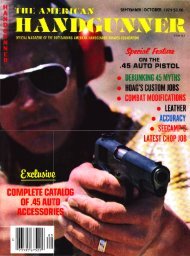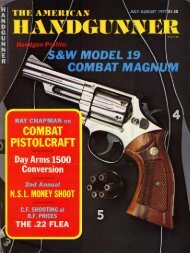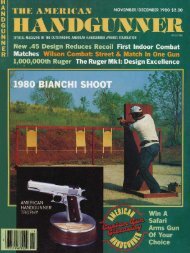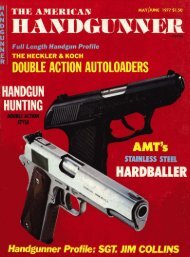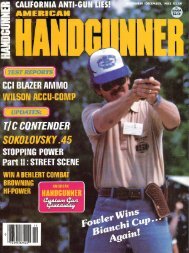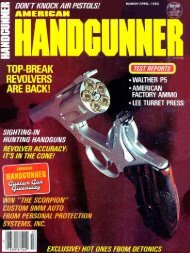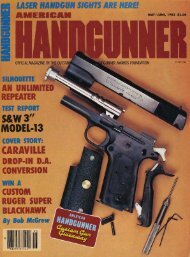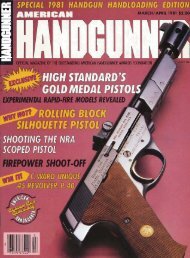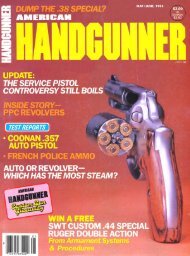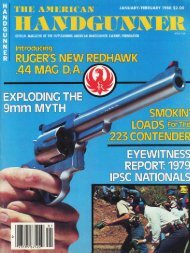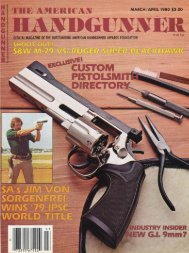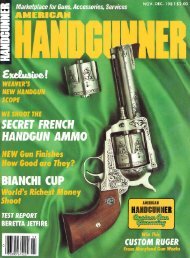American Handgunner May/June 1978
American Handgunner May/June 1978
American Handgunner May/June 1978
You also want an ePaper? Increase the reach of your titles
YUMPU automatically turns print PDFs into web optimized ePapers that Google loves.
Customized OMC below barely showsthe added hammer extension whichis partially hidden by the slide.just to the rear of the magazine release,and installed a screw to extend into a holein the bottom of the grip safety piece,locking it in the depressed position. If anyonewanted it to function again, simply removingthe screw would restore its operation.Finally, we took our new creation out tothe range, where it ran flawlessly throughtwo boxes of .380's. It was noted thatwhile we had no difficulty, the spur of thehammer extension during recoil cameperilously close to the shooter's hand, andsomeone with more flesh in that areamight possibly be nipped by it. Even so, Ithink it worked out well. The manual safetyfunction is unchanged, and having one"up the spout," as the British say, makesthe first shot available by just flickingback the hammer. In regard to the cost,any competent gunsmith should be able todo this alteration for around fifty dollars.I think it's important to point out thatthis entire job falls into the experimentalcategory, and I don't feel that a hundredrounds would come anywhere close tobeing a definitive test. Could the screwmountedhammer piece break off? Coulda sharp blow on the spur break the sear orsear step, allowing accidental firing? Unlikely,but anything is possible. So, if youdecide to try this conversion, keep inmind that neither the writer nor GUNSMagazine can be held responsible if somethinglets go. It was an interesting endeavor,and my friend was pleased with it, butat the present time it'sstill being tested.Clearance below hammer in frame allows hammer "whip"' during recoil.used. Secondly, the hammer extension,while adding some weight, also slowed thefall of the hammer. The result of thesecombined factors was a series of misfires.As they say, back to the old drawingboard, and my compliments to the OMCengineers for a finely-balanced full-reachsystem.Since the cocking spur of my hammerextension was well-shrouded against beingaccidentally struck from the rear, I finallysettled on cutting a semi-safety step on thelower front of the hammer, to hold it atrest a small distance away from the headof the firing pin. This was not a true safetystep, as trigger pressure would still dropthe hammer. The movement, however,was only about a sixteenth of an inch, andin repeated tests would not even dent aprimer. With this semi-safety step, theoriginal full-length firing pin could beused, and there were no more misfires.At this point in the proceedings, myfriend asked if there were some simpleway to cancel the grip safety. I drilled asmall hole in the bottom of the grip frame,Small screw on altered gun (right)cancels operation of grip safety.AFRICAN HANDGUNNER MAY/JUNE <strong>1978</strong>



